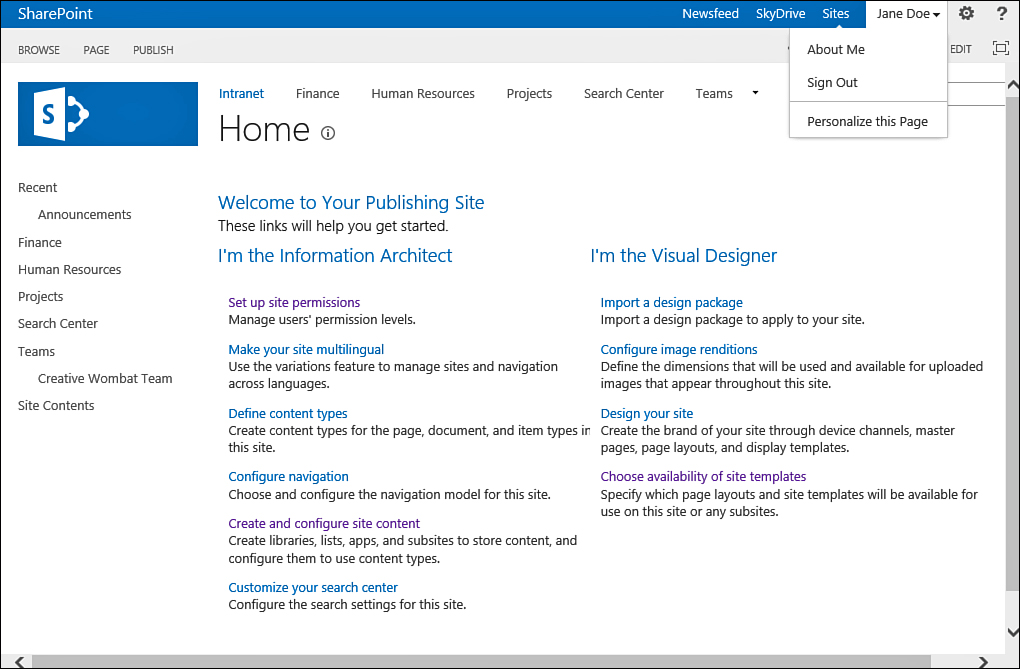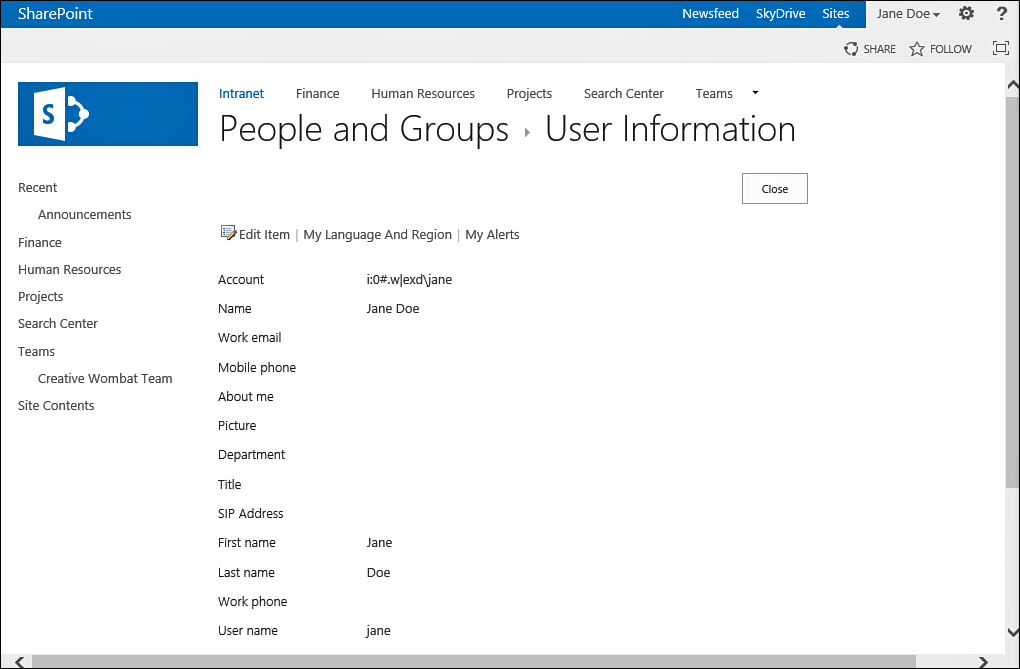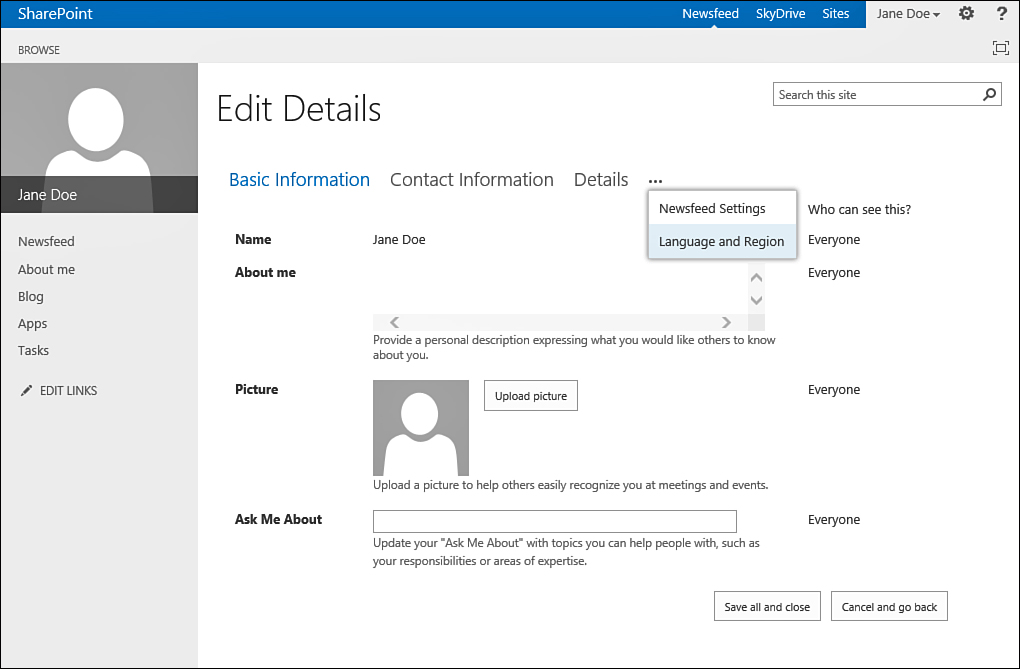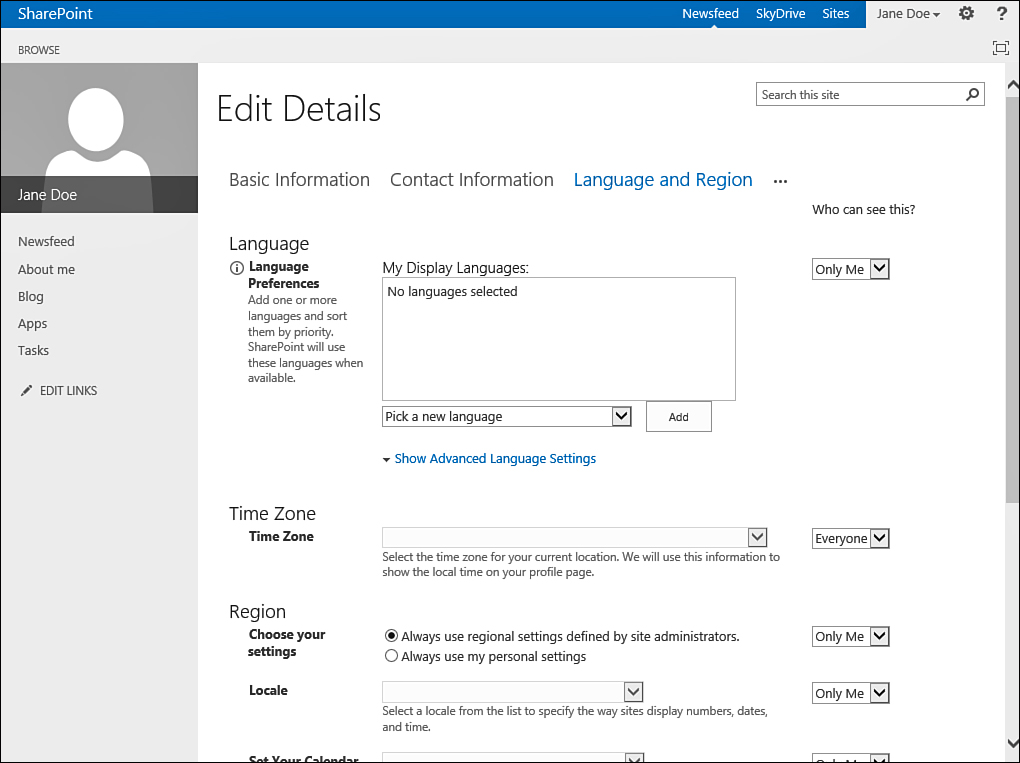Scenario/Problem:
When you are working in an environment that has sites from all over the
world, you might want to define in a specific site that you want the
date formatting to appear in the way you are used to—for example, with
the month before or after the day in a date. You might also want to
show time data in your time zone, and not in the time zone that the
site manager set. For example, when viewing a list of events, you might
see an event scheduled to start at nine in the morning. But if the site
was created by someone in Japan, and you are in the United States, you
need to know whether that time is based on the time zone in Japan or in
your time zone.
Solution:
Depending on the configuration of the SharePoint environment, you might
be able to define your own regional settings for that environment
(which will affect all sites in that environment) or for the specific
site (which affects just that site). Doing this changes the way the
site is presented to you, without affecting anyone else’s view of the
site.
When you change the regional settings, you
can define how you want dates and numbers to be shown to you, the
default sort order that will be used in the site when you view lists,
what calendar format you want to see, and how you want to define your
work week days.
For example, in a calendar list of events,
when the regional settings are set to Australian regional settings, the
events are shown with the day before the month. But if you change the
settings to the American regional settings, the date will show the
month before the day, and the times for the events will change, to show
when the events occur in the selected time zone.
To change the settings, you click on the [your name]
link at the top of the page to open a drop-down menu. Depending on the
environment’s setup, you will see either a My Settings link or an About
Me link (see Figure 1).

FIGURE 1 The About Me link in the drop-down menu.
Change Settings Only for Current Site
If you click the My Settings link, SharePoint opens a page showing your details as they are saved in the system (see Figure 2).
When you click on My Language and Region, SharePoint opens the Language
and Region configuration screen, where you can choose the settings you
want. The default option is to always follow the settings defined for
the website. Unless you clear this option (called “Always follow web
settings”), you will not be able to set any personal setting for
yourself.

FIGURE 2 The Language and Region page.
Change Settings for Entire Environment
If you click the About Me link, SharePoint
opens your personal site, showing a page with your details, and a link
to edit your profile. Click the Edit link to see a few tabs of profile
information to edit . Click on the link showing three dots—this opens a drop-down menu with the option Language and Region, as shown in Figure 3.

FIGURE 3 The Edit Details page, with the drop-down menu open to show the regional settings link.
Click this option to show the configuration
options for your regional settings for the entire environment. The
default option is to always use regional settings defined by site
administrators, and you can override it by selecting “Always use my
personal settings” as shown in Figure 4.

FIGURE 4 The Edit Details—Language and Region page.
Regional Settings You Can Change
The following are the settings you can configure on either of those pages after you override the site’s regional settings:
- Locale—Sets the formats of dates, numbers, and sorting order.
- Time Zone—Sets your time zone so that times (for example, time for a meeting) will be displayed to you in your time zone.
- Set Your Calendar—Allows
you to select a different calendar format (for example, the Jewish
calendar or Arabic calendar) to be displayed instead of the default one.
- Enable an Alternate Calendar—Allows you to select an alternative secondary calendar that will be displayed in addition to the default one.
- Define Your Work Week—Allows you to select your work week and working hours (which changes how calendars are colored when displayed to you).
- Time Format—Allows
you to select whether the time format should be 12-hour format (for
example, 01:00 PM) or 24-hour format (for example, 13:00).